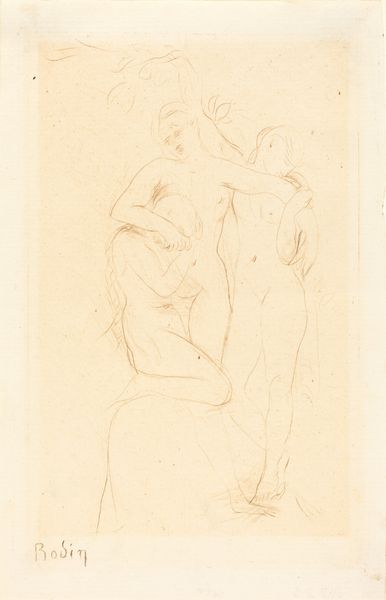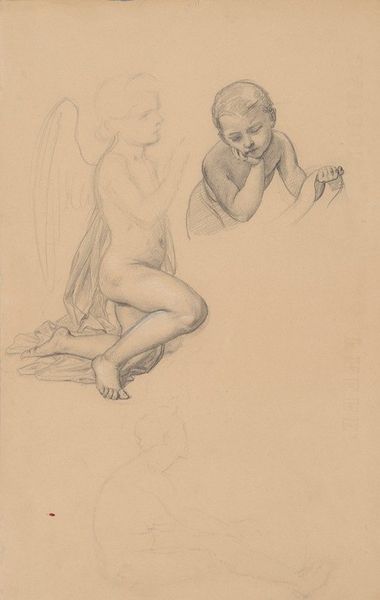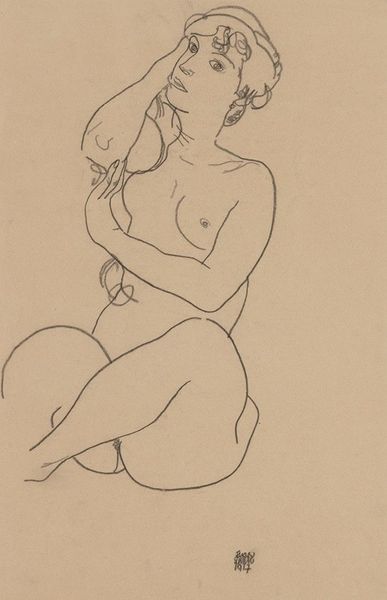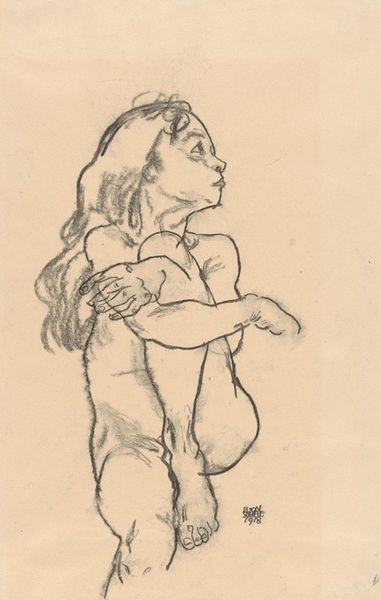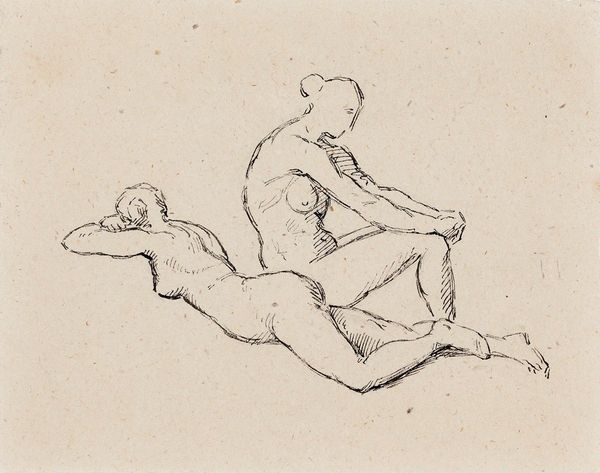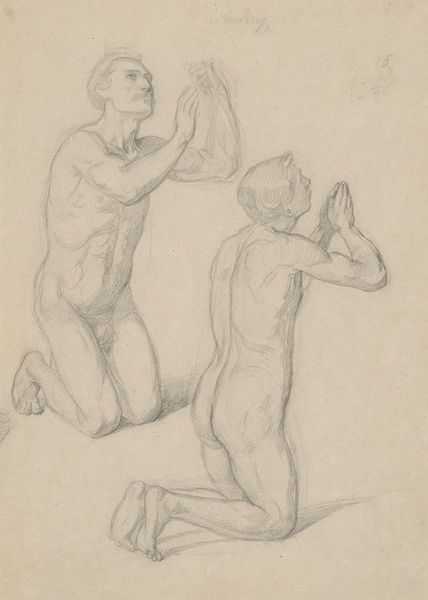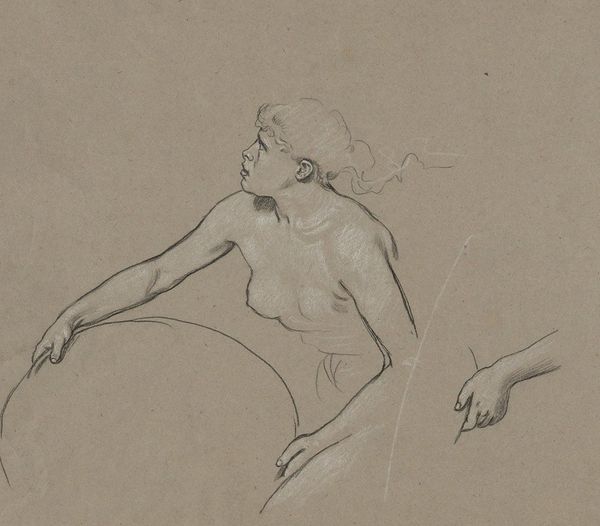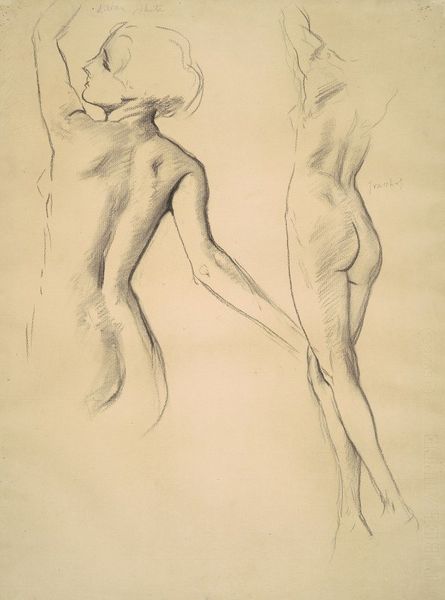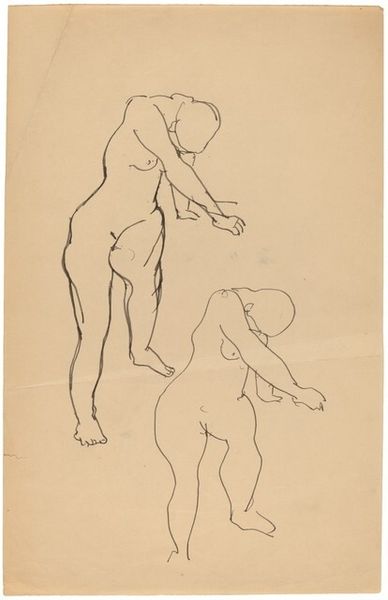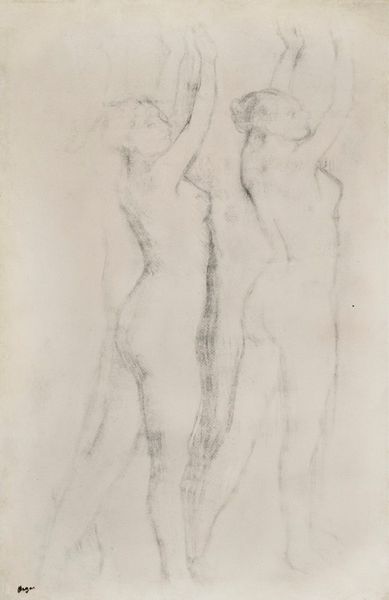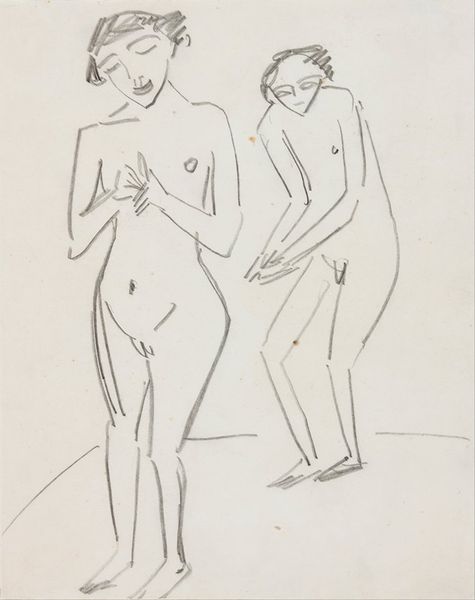
Study of angels for the painting ‘The Immaculate Conception of the Blessed Virgin Mary’ 1864
0:00
0:00
drawing, pencil
#
portrait
#
pencil drawn
#
drawing
#
charcoal drawing
#
pencil drawing
#
pencil
#
portrait drawing
#
academic-art
#
nude
#
realism
Copyright: Public Domain: Artvee
Editor: This delicate pencil drawing from 1864 is titled "Study of angels for the painting ‘The Immaculate Conception of the Blessed Virgin Mary’" by Józef Simmler. It's captivating in its simplicity, just two figures rendered with such soft lines. What strikes you about this piece? Curator: Well, immediately, I think about the context in which Simmler was working. 19th-century academic art often served a very specific socio-political purpose. These preparatory sketches weren't just about aesthetics, they were tools in a larger system of representation. How would a painting of angels contribute to national or religious sentiment at that time, especially in Poland, which was under partition? Editor: So, the depiction of religious figures wasn’t purely artistic, but potentially a statement? Curator: Precisely! Think about it. The Immaculate Conception is a powerful symbol within Catholicism. By choosing this subject, and by creating an image of ethereal beauty and innocence through the figures of angels, Simmler's appealing to deep-seated cultural and religious values, reminding people of their shared identity, even if implicitly. How does the medium – pencil on paper – contribute to this feeling, versus, say, a grand oil painting? Editor: The fragility of pencil emphasizes a sense of purity and innocence, perhaps even a yearning for something ideal in a turbulent world? Curator: Exactly. And the scale—knowing this is a study, a preparation—it invites a kind of intimacy that a grand, finished painting in a church might not. Simmler controlled the potential meanings. Considering the time, could the image invite some potential political reflection on, or solidarity between, viewers? Editor: That’s something I hadn't fully appreciated - the layers of social meaning embedded in even seemingly simple religious studies. It highlights the active role artists played in shaping cultural values. Curator: Indeed. This piece has so much more to say about Simmler’s world than first meets the eye. I find it a testament to art’s potential for cultural commentary.
Comments
No comments
Be the first to comment and join the conversation on the ultimate creative platform.
